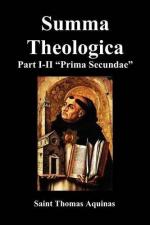Reply Obj. 7: The Lord commanded an altar to be made for the offering of sacrifices and gifts, in honor of God, and for the upkeep of the ministers who served the tabernacle. Now concerning the construction of the altar the Lord issued a twofold precept. One was at the beginning of the Law (Ex. 20:24, seqq.) when the Lord commanded them to make “an altar of earth,” or at least “not of hewn stones”; and again, not to make the altar high, so as to make it necessary to “go up” to it “by steps.” This was in detestation of idolatrous worship: for the Gentiles made their altars ornate and high, thinking that there was something holy and divine in such things. For this reason, too, the Lord commanded (Deut. 16:21): “Thou shalt plant no grove, nor any tree near the altar of the Lord thy God”: since idolaters were wont to offer sacrifices beneath trees, on account of the pleasantness and shade afforded by them. There was also a figurative reason for these precepts. Because we must confess that in Christ, Who is our altar, there is the true nature of flesh, as regards His humanity—and this is to make an altar of earth; and again, in regard to His Godhead, we must confess His equality with the Father—and this is “not to go up” to the altar by steps. Moreover we should not couple the doctrine of Christ to that of the Gentiles, which provokes men to lewdness.
But when once the tabernacle had been constructed to the honor of God, there was no longer reason to fear these occasions of idolatry. Wherefore the Lord commanded the altar of holocausts to be made of brass, and to be conspicuous to all the people; and the altar of incense, which was visible to none but the priests. Nor was brass so precious as to give the people an occasion for idolatry.




